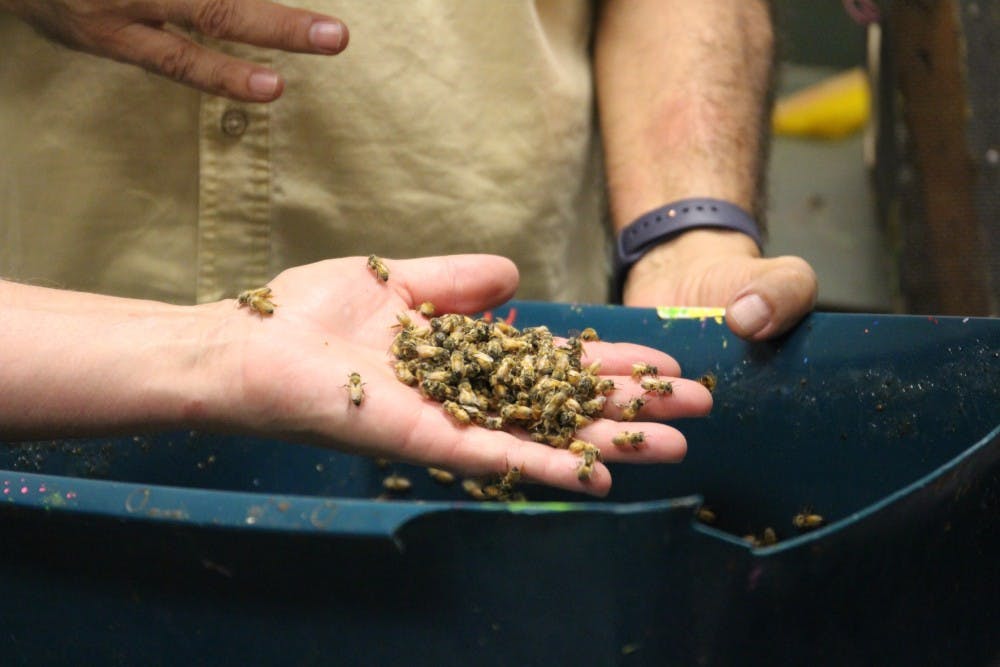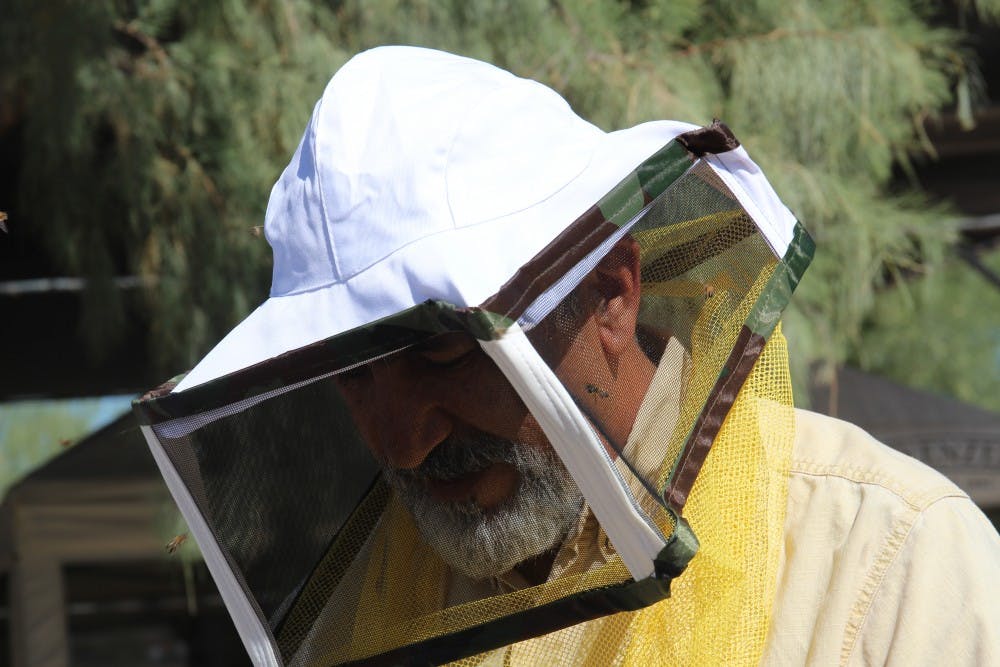About a mile from the Polytechnic campus on Old Pecos road in Mesa is ASU’s Bee Lab Annex. Aside from the sign outside that reads “Bee Xing,” outside of the lab, there’s little that would suggest that within the building is what one lab member calls one of the biggest honey bee research labs in the country.
The research lab, part of the School of Life Sciences, focuses on the genetics, behavior and physiology of bees, Bee Lab Manager Osman Kaftanoglu said.
“We established this laboratory in 2005, and this is one of the biggest labs in the United States, maybe in Europe too,” Kaftanoglu said. “We have about 100 honey bee colonies outside.”
The decline of honey bees has been widely reported on and has evolved into a popular internet meme. Nonetheless, Kaftanoglu said understanding bees and continuing research helps them understand what makes bees such a vital part of the environment.
“Honey bees are very important for human society,” Kaftanoglu said. “There used to be 5.5 or 6 million colonies in the U.S., but now the number is less than 2.6 million. It declined about 45 or 50 percent. In developing countries, the number of colonies is increasing every year, but in developed countries like the U.S. or in parts of Europe, the number is declining.”
Researchers in the bee lab work with European honey bees rather than the bee’s more defensive Africanized cousin. The European honey bees are more docile, and don’t typically attack unless they are agitated. But one colony in the lab was defensive when Kaftanoglu released them in a demonstration, and he was stung multiple times.
“I don’t even feel it anymore,” Kaftanoglu said as he removed the stinger from his arm. The trick to removing a stinger, he said, is to scratch it off with a fingernail.
One of the researchers within the bee lab, Chelsea Cook, a postdoc research associate, is studying behavior in honey bees with an experiment similar to Pavlov’s experiment on dogs, but instead of using a bell as a stimulus, Cook used smells.
“What we’re studying is a behavior called latent inhibition, and this is a fancy way of saying learning how to ignore unimportant stimuli,” Cook said. “We don’t know what latent inhibition does for bees, so that’s kind of the goal of this grant — to figure out why the bees exhibit this behavior.”
For the experiment, the bees were exposed to sucrose, causing the bees to show their tongues.
“We do this in association with odor,” Cook said. “And after a couple of trials, what will happen is you could blow the odor at them and the tongue will come out without the sucrose associated with it. We know bees exhibit this behavior. But some bees will ignore that pre-exposed odor and won’t stick their tongue out for it. Others stick their tongue out for any odor. What we want to figure out is why they exhibit this.”
Eda Sezen, a junior sustainability major and intern in the bee lab, started working at the lab in July and recently finished an experiment on how global warming affected a bee’s lifespan. As she had expected, the bee’s lifespan was shorter.
“That experiment just ended actually," Sezen said. "It lasted about two months, and we put them in an incubator for about three hours. The results were accurate to what the predictions were. They die faster in the higher heat temperatures.”
Sezen also helped with the pavlov-style experiment. She didn’t have much experience working with bees in the past, but she said she’s grown very fascinated with bees since starting her research.
She said she likes being in a position to inform more people about bees as well as how to save them.
“Most people, when I talk to them about bees, really don’t know about what’s going on,” Sezen said. “So it’s interesting to be able to spread more information about it just because there’s more we have to learn. People know the bees are dying, and everyone is saying ‘save the bees,’ but we need to do more.”
Reach the reporter at Emmillma@asu.edu or follow @Millmania1 on Twitter.
Like The State Press on Facebook and follow @statepress on Twitter.





